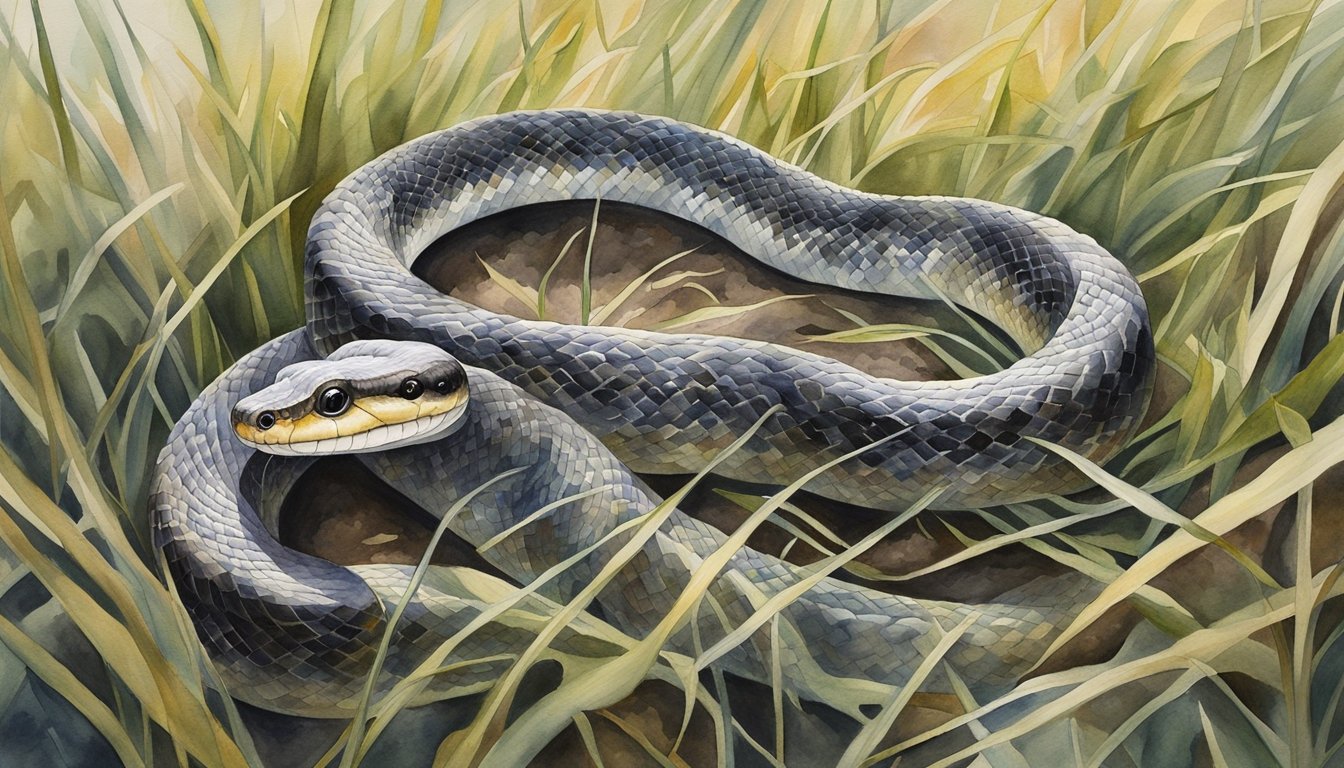Louisiana Rat Snake Characteristics
Louisiana Rat Snakes (Pantherophis spiloides), which reside in the southern United States, are a type of non-venomous constrictor. These snakes employ their robust bodies to subdue prey, which primarily consists of rodents, highlighting their role in local ecosystems as natural pest controllers.
Among the rat snakes in Louisiana, coloration and patterns can vary. Typically, these snakes exhibit colors ranging from black to various shades of gray. Their bodies are adorned with conspicuous blotches, which are darker than their base color, creating a striking contrast—a characteristic that assists in camouflage and deters predators.
Physical Features:
- Length: They are known for their impressive length, usually measuring between 25 to 84 inches.
- Scales: The texture of their scales can fluctuate, with some instances displaying a calico effect of yellow, orange, or red amidst their primary coloration. Such variation is often more noticeable immediately after shedding.
- Head Shape: The head bears a distinctive shape, often spear-like, which aids in identification.
Louisiana Rat Snakes are adept climbers, making use of their strong, flexible bodies to ascend trees and other vertical surfaces. This climbing ability facilitates their search for food and can lead them into unexpected places such as barns and attics.
The non-venomous nature of these rat snakes makes them harmless to humans, but they are crucial in controlling the populations of their prey. It’s always an advantage to appreciate their presence as they contribute to the balance of their habitats.
For more details on their climbing prowess and physical description, you can explore resources at Reptile Jam and the Louisiana Department of Wildlife and Fisheries.
Habitat and Behavior

Louisiana provides a rich variety of habitats suitable for rat snakes, particularly the Pantherophis spiloides and Pantherophis obsoletus species. These snakes are frequently found in areas such as marshes and swamps, but they are adaptable and can also thrive in agricultural and suburban areas. Pastures and fields in Southern and Eastern Louisiana offer ample space for hunting, while the abundance of trees helps these natural climbers navigate the landscape efficiently.
These reptiles exhibit a preference for being up high, which explains why they are often spotted elevated in trees or barn rafters. Their climbing abilities not only serve as a means of hunting for birds or raiding nests for bird eggs, but also provide an escape from potential predators.
The diet of rat snakes primarily consists of rodents, which positions them as important pest controllers in agricultural settings. However, their prey also includes other small mammals, birds, bird eggs, frogs, and eggs, showcasing their adaptability when it comes to feeding.
Rat snakes employ various hunting techniques. Their behavior at night indicates they are nocturnal hunters, using the cover of darkness to track down and ambush their prey.
During encounters with humans or predators, they may display a distinctive behavior of raising the front of their body and producing a rattling sound with their tail. While this may mimic venomous snakes, rat snakes in Louisiana are nonvenomous and this action is purely a defensive display meant to ward off any threats.

